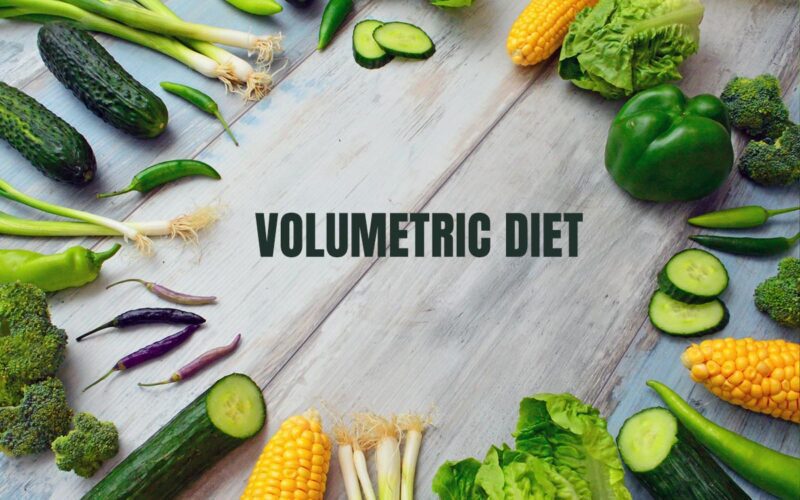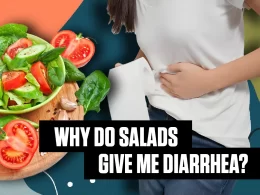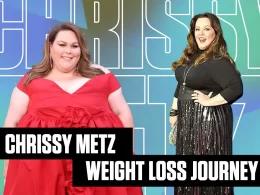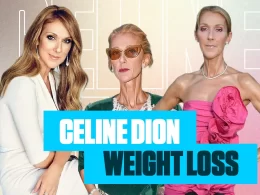Table of Contents Show
The Volumetric Diet Food List pertains to a weight management strategy centered around foods with high volume but low-calorie density. This method highlights the consumption of water-rich, fiber-packed, and nutrient-dense foods. These choices induce satiety and fulfillment while curbing calorie intake. Essentially, the volumetric diet’s premise lies in opting for foods offering greater volume compared to their calories, enabling sizable portions while supporting weight loss or maintenance.
The primary principle of the volumetric diet is to prioritize foods that are naturally low in calories but have high water content. These foods provide a feeling of fullness without contributing significantly to your overall calorie intake. By increasing the volume of your meals with these types of foods, you’re less likely to feel hungry and more likely to stay within a healthy calorie range.
Foods that are often recommended in the volumetric diet food list include non-starchy vegetables (like leafy greens, broccoli, and peppers), fruits with high water content (such as berries and melons), lean proteins, whole grains, and foods with high fiber content. On the other hand, foods that are dense in calories and unhealthy fats are generally limited or avoided in this diet.
The volumetric diet encourages mindful eating and paying attention to hunger and fullness cues. It’s not about strict calorie counting, but rather about choosing foods that promote satiety while still providing essential nutrients. While the volumetric diet can be effective for weight management, as with any diet, it’s important to ensure that you’re meeting your nutritional needs and consulting with a healthcare professional before making significant changes to your eating habits.
Benefits of volumetric diet
The volumetric diet offers several potential benefits for those seeking to manage their weight and improve their overall health. Here are some of the key advantages associated with adopting a volumetric diet:
- Satiety and Hunger Control: One of the primary benefits of the volumetric diet is its ability to promote a feeling of fullness and satisfaction. Foods with high water content and fiber take up more space in the stomach, triggering stretch receptors that signal to the brain that you’re full. This can lead to reduced hunger and help prevent overeating.
- Weight Management: By choosing foods that are lower in calorie density but high in volume, individuals can consume larger portions while still controlling their calorie intake. This approach can make it easier to manage portion sizes and stay within a healthy calorie range, which is essential for weight loss or weight maintenance.
- Nutrient Intake: The volumetric diet encourages the consumption of whole, nutrient-rich foods such as fruits, vegetables, lean proteins, and whole grains. This can lead to a higher intake of essential vitamins, minerals, and antioxidants, supporting overall health and well-being.
- Balanced Nutrition: Unlike restrictive diets that eliminate entire food groups, the volumetric diet emphasizes a balanced approach to eating. It encourages the inclusion of a variety of foods from different food groups, promoting a well-rounded and diverse diet.
- Long-Term Sustainability: Since the volumetric diet doesn’t involve strict calorie counting or extreme restrictions, it can be easier to follow in the long term. It focuses on making healthier food choices rather than deprivation, making it more likely for individuals to stick with the diet over time.
- Reduced Cravings: High-fiber foods in the volumetric diet can help stabilize blood sugar levels and reduce cravings for sugary and high-calorie snacks. This can contribute to better control over impulse eating.
- Heart Health: The emphasis on whole foods, lean proteins, and healthy fats aligns with heart-healthy eating patterns. This can help lower the risk of cardiovascular diseases by promoting healthy cholesterol levels and blood pressure.
- Improved Digestion: The diet’s emphasis on fiber-rich foods can support regular bowel movements and promote digestive health.
- Enhanced Hydration: Many foods with high water content, such as fruits and vegetables, contribute to hydration, which is essential for various bodily functions.
- Education about Food Choices: Following the volumetric diet can educate individuals about the calorie content and nutritional value of different foods. This knowledge can empower them to make informed decisions about their dietary choices.
volumetric diet food list
list of foods that are typically included in the volumetric diet:
Vegetables:
- Spinach
- Kale
- Broccoli
- Cauliflower
- Carrots
- Bell peppers
- Zucchini
- Cucumbers
- Tomatoes
- Mushrooms
- Brussels sprouts
- Asparagus
- Celery
Fruits:
- Berries (strawberries, blueberries, raspberries)
- Apples
- Pears
- Oranges
- Watermelon
- Cantaloupe
- Grapefruit
- Kiwi
- Peaches
- Plums
Lean Proteins:
- Tofu
- Tempeh
- Beans (black beans, kidney beans, chickpeas)
- Lentils
Whole Grains:
- Quinoa
- Brown rice
- Whole wheat pasta
- Oats
- Barley
- Farro
- Bulgar
Broth-based Soups:
- Vegetable broth soups
- Minestrone
- Lentil soup
- Gazpacho
- Tom Yum soup
Dairy or Dairy Alternatives:
- Low-fat yogurt
- Greek yogurt
- Almond milk
- Coconut milk (unsweetened)
- Cottage cheese (low-fat)
Nuts and Seeds:
- Almonds
- Walnuts
- Pistachios
- Chia seeds
- Flaxseeds
- Pumpkin seeds
- Sunflower seeds
Beverages:
- Water
- Herbal teas (unsweetened)
- Sparkling water (plain or infused with citrus)
Condiments and Flavor Enhancers:
- Herbs and spices (parsley, basil, oregano, cinnamon, etc.)
- Vinegars (balsamic, apple cider, red wine)
- Mustard (Dijon or whole grain)
- Salsa (low-sodium)
- Hot sauce (with no added sugars)
- Lemon or lime juice
The Foods to Avoid or Limit on the Volumetric Diet food list
The volumetric diet is a way of eating that focuses on the volume of food rather than the calories. It aims to help you feel full and satisfied by choosing foods that have a low calorie density, meaning they have fewer calories per gram. Foods with a high water content, such as fruits, vegetables, broth-based soups, and nonfat dairy products, are examples of low calorie density foods that you can eat freely on the volumetric diet.
However, not all foods are suitable for the volumetric diet. Some foods have a high calorie density, meaning they have more calories per gram. These foods tend to be high in fat, sugar, or both, and they can easily add up to a lot of calories without filling you up. Foods with a high calorie density should be avoided or limited on the volumetric diet.
Some examples of foods to avoid or limit on the volumetric diet food list are:
- Fatty meats and fish, such as bacon, sausage, salami, ribs, steak, butter, cheese, cream, ice cream, and fried foods. These foods are high in saturated fat and cholesterol, which can increase your risk of heart disease and stroke2.
- Processed foods, such as chips, crackers, cookies, cakes, candy, pastries, pies, and doughnuts. These foods are high in refined carbohydrates and added sugars, which can spike your blood sugar and insulin levels and lead to weight gain and diabetes2.
- Nuts, seeds, dried fruits, and granola bars. These foods are high in healthy fats and fiber, but they are also very calorie-dense. A small handful of nuts or dried fruits can have hundreds of calories. You can still enjoy these foods in moderation on the volumetric diet, but you should measure your portions carefully and limit them to one or two servings per day.
- Alcoholic beverages, such as beer, wine, liquor, and cocktails. These drinks are high in calories and low in nutrients. They can also impair your judgment and make you more likely to overeat or choose unhealthy foods. You should limit your alcohol intake to no more than one drink per day for women and two drinks per day for men.
By avoiding or limiting these foods on the volumetric diet, you can reduce your calorie intake and lose weight without feeling hungry or deprived. You can also improve your health and lower your risk of chronic diseases by eating more low calorie density foods that are rich in vitamins, minerals, antioxidants, and phytochemicals.
Menu and Recipes for a Day on the Volumetric Diet Food List
A menu and recipes for a day on the volumetric diet could look something like this:
Breakfast: Vegetable omelet with side of whole-wheat toast
- To make the omelet, whisk two egg whites with a pinch of salt and pepper. Spray a nonstick skillet with cooking spray and heat over medium-high heat. Add 1/4 cup of chopped onion, 1/4 cup of chopped bell pepper, and 1/4 cup of chopped mushroom and cook until soft, about 5 minutes. Transfer the vegetables to a plate and keep warm. Pour the egg mixture into the same skillet and cook until set, about 3 minutes. Flip the omelet and sprinkle 2 tablespoons of shredded low-fat cheese on top. Fold the omelet in half and slide onto a plate. Serve with one slice of whole-wheat toast and 1/4 cup of salsa.
- This breakfast provides about 250 calories, 20 grams of protein, 30 grams of carbohydrates, 6 grams of fat, and 6 grams of fiber.
Morning snack: Low-fat Greek yogurt with fruit
- Mix 3/4 cup of plain low-fat Greek yogurt with 1/2 cup of fresh or frozen berries of your choice. You can also add a teaspoon of honey or maple syrup for sweetness if you like.
- This snack provides about 150 calories, 15 grams of protein, 20 grams of carbohydrates, 2 grams of fat, and 3 grams of fiber.
Lunch: Lean meat chili with beans and vegetables
- To make the chili, heat a large pot over medium-high heat and add 1 pound of lean ground turkey or beef. Cook, breaking it up with a wooden spoon, until browned, about 10 minutes. Drain the excess fat and return the meat to the pot. Add one 15-ounce can of low-sodium black beans (drained and rinsed), one 14.5-ounce can of no-salt-added diced tomatoes (with their juices), one 8-ounce can of tomato sauce, one cup of water, one tablespoon of chili powder, one teaspoon of cumin, one teaspoon of oregano, one teaspoon of garlic powder, and salt and pepper to taste. Bring the mixture to a boil, then reduce the heat and simmer until thickened, about 20 minutes. Stir in one cup of frozen corn kernels and cook until heated through, about 5 minutes. Ladle the chili into four bowls and top each with 2 tablespoons of shredded low-fat cheese and 2 tablespoons of chopped green onion.
- This lunch provides about 400 calories, 35 grams of protein, 40 grams of carbohydrates, 12 grams of fat, and 12 grams of fiber per serving.
Afternoon snack: Air-popped popcorn (no butter) with glass of milk
- Pop 3 tablespoons of popcorn kernels in an air-popper or in a paper bag in the microwave. Sprinkle with salt or your favorite seasoning if you like. Enjoy with an 8-ounce glass of skim milk.
- This snack provides about 150 calories, 9 grams of protein, 25 grams of carbohydrates, 2 grams of fat, and 4 grams of fiber.
Dinner: A piece of fish, steamed veggies, quinoa
- To make the fish, preheat the oven to 375°F and line a baking sheet with foil. Place four 4-ounce fillets of salmon or any other fish you prefer on the prepared baking sheet. Drizzle with lemon juice and season with salt, pepper, and dried dill. Bake for 15 to 20 minutes or until the fish flakes easily with a fork.
- To make the veggies, fill a large pot with water and bring to a boil. Add a steamer basket with your choice of fresh or frozen vegetables, such as broccoli, cauliflower, carrots, green beans, or zucchini. Cover the pot and steam until the vegetables are crisp-tender, about 10 minutes. Season with salt, pepper, and a drizzle of olive oil if you like.
- To make the quinoa, rinse one cup of quinoa in a fine-mesh strainer under running water. Transfer to a medium saucepan and add two cups of water or low-sodium chicken broth. Bring to a boil, then reduce the heat and simmer until the quinoa is fluffy and the liquid is absorbed, about 15 minutes. Fluff with a fork and season with salt, pepper, and chopped parsley if you like.
- Serve each fillet of fish with one cup of steamed veggies and one cup of quinoa.
- This dinner provides about 450 calories, 35 grams of protein, 50 grams of carbohydrates, 12 grams of fat, and 7 grams of fiber per serving.
Tips and Tricks to Make the Volumetric Diet Work for You
The volumetric diet is a way of eating that focuses on the volume of food rather than the calories. It aims to help you feel full and satisfied by choosing foods that have a low calorie density, meaning they have fewer calories per gram. Foods with a high water content, such as fruits, vegetables, broth-based soups, and nonfat dairy products, are examples of low calorie density foods that you can eat freely on the volumetric diet food list.
Here are some tips and tricks to make the volumetric diet work for you:
- Start your day with a high-volume breakfast. A study found that eating a large breakfast with low calorie density can reduce hunger and calorie intake throughout the day. Some examples of high-volume breakfasts are oatmeal with fruit, vegetable omelet with whole-wheat toast, or quinoa and steamed vegetables.
- Drink plenty of water. Water is the “magic ingredient” to lower the caloric density of a meal. Drinking water before or during a meal can help you feel fuller and eat less. You can also add flavor to your water with lemon, cucumber, mint, or berries.
- Snack smartly. Snacking can help you curb your appetite and prevent overeating at meals, but you need to choose snacks that are low in calorie density and high in nutrients. Some examples of smart snacks are low-fat Greek yogurt with fruit, air-popped popcorn (no butter) with a glass of milk, or raw veggies with hummus or tzatziki dip.
- Swap out high-calorie ingredients for lower-calorie ones. You can still enjoy your favorite dishes by making some simple substitutions that can lower the calorie density of your meals. For instance, you can use mashed cauliflower instead of mashed potatoes, zucchini noodles instead of pasta, or Greek yogurt instead of sour cream or mayonnaise.
- Fill half of your plate with non-starchy vegetables. Vegetables are the best foods to eat on the volumetric diet because they are high in water and fiber, and low in calories. They can also add color, flavor, and texture to your meals. Aim to fill half of your plate with non-starchy vegetables, such as broccoli, cauliflower, carrots, green beans, or zucchini. You can steam, roast, grill, or sauté them with herbs and spices for extra taste.
- Eat slowly and mindfully. Eating slowly and mindfully can help you savor your food and pay attention to your hunger and fullness cues. It takes about 20 minutes for your brain to register that you are full, so eating too fast can lead to overeating. Try to chew each bite thoroughly, put down your fork between bites, and avoid distractions such as TV or phone while eating.
By following these tips and tricks, you can make the volumetric diet food list work for you and achieve your weight loss goals without feeling hungry or deprived. You can also improve your health and lower your risk of chronic diseases by eating more low calorie density foods that are rich in vitamins, minerals, antioxidants, and phytochemicals.
FAQ’s on volumetric diet food list
Some frequently asked questions on the volumetric diet food list are:
What is the volumetric diet food list?
The volumetric diet food list is a way of categorizing foods based on their calorie density, which is the number of calories per gram of food. Foods with a low calorie density have fewer calories per gram and tend to be high in water and fiber, such as fruits, vegetables, broth-based soups, and nonfat dairy products. Foods with a high calorie density have more calories per gram and tend to be high in fat, sugar, or both, such as fatty meats, processed foods, nuts, seeds, and alcoholic beverages.
How does the volumetric diet food list help with weight loss?
The volumetric diet food list helps with weight loss by encouraging you to eat more of the low calorie density foods and less of the high calorie density foods. By doing so, you can eat a larger volume of food and feel fuller and more satisfied while consuming fewer calories. Studies have shown that eating low calorie density foods can reduce hunger and calorie intake throughout the day.
What are some examples of meals and snacks on the volumetric diet food list?
Here are some examples of meals and snacks on the volumetric diet food list, according to a beginner’s guide:
Breakfast: Vegetable omelet with side of whole-wheat toast
Morning snack: Low-fat Greek yogurt with fruit
Lunch: Lean meat chili with beans and vegetables
Afternoon snack: Air-popped popcorn (no butter) with glass of milk
Dinner: A piece of fish, steamed veggies, quinoa
Are there any foods that are off-limits on the volumetric diet food list?
No, there are no foods that are off-limits on the volumetric diet food list. However, some foods should be avoided or limited because they have a high calorie density and can easily add up to a lot of calories without filling you up. These foods include fatty meats, processed foods, nuts, seeds, dried fruits, granola bars, alcoholic beverages, and high-fat or high-sugar desserts. You can still enjoy these foods in moderation on the volumetric diet, but you should measure your portions carefully and limit them to one or two servings per day.
Conclusion on volumetric diet food list
Remember, the volumetric diet food list emphasizes foods with high water content, fiber, and low energy density. This list is not exhaustive, but it should give you a good starting point for creating meals that align with the principles of the volumetric diet. It’s essential to balance your food choices and consider portion sizes to achieve your desired health and weight management goals.




